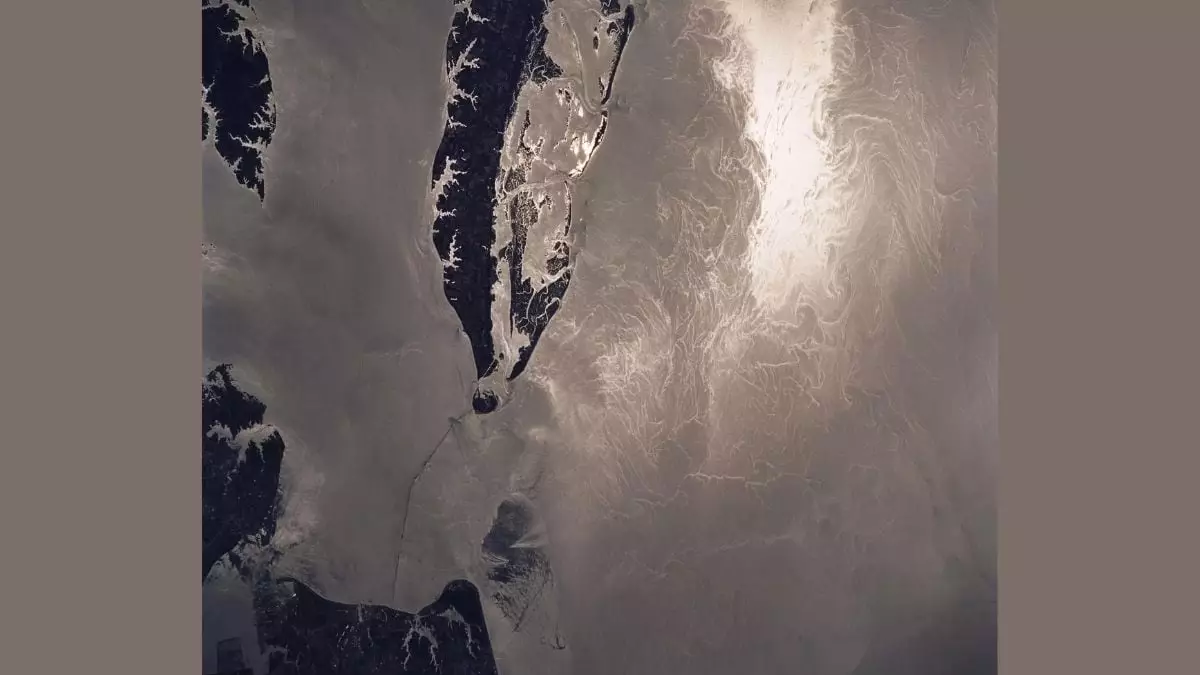In an age dominated by the rush of technological advancement, our understanding of the Earth’s climate systems remains embarrassingly limited. Yet, a breakthrough has emerged through the relentless pursuit of knowledge: the SWOT (Surface Water and Ocean Topography) satellite. This collaboration between NASA and the French space agency CNES is not merely a technological marvel; it is a seismic shift in how we perceive the complexities of ocean currents. By capturing minute details of submesoscale waves and eddies—phenomena often dismissed as insignificant—SWOT brings to light the multifaceted interactions that underpin our climate and marine ecosystems.
The Insignificance Dilemma
For too long, the importance of small-scale ocean features has been grossly underestimated. Many scientists and policymakers have relegated these elements to the fringes of research, considering them inconsequential when juxtaposed with grander oceanic systems. However, the insights provided by SWOT shatter this complacency. The satellite’s ability to observe previously invisible vertical currents transcends the capability of traditional ship-based methodologies. As oceanographer Matthew Archer articulates, these currents are pivotal in facilitating exchanges between the depths and the atmosphere, counteracting the notion that our climate can be regulated solely by larger geophysical forces.
A Ripple Effect on Climate Modeling
What makes SWOT so revolutionary is not just the discovery of these currents but its implications for ocean modeling. The data generated calls for a paradigm shift—traditional models that ignore these subtleties are now obsolete. Lee Fu from NASA’s Jet Propulsion Laboratory is unequivocal: models must integrate the newfound complexities captured by SWOT. The implications stretch beyond academia and into the realm of climate policy, revealing how necessary it is for lawmakers to adopt a more nuanced understanding of ocean dynamics as we face escalating climate challenges.
Seizing the Opportunity for Action
In the context of global warming and environmental degradation, the insights gleaned from SWOT offer a glimmer of hope—provided we act on them. We stand at a crossroads: armed with data depicting how vertical currents impact atmospheric temperatures and nutrient distribution, we have a moral obligation to redefine our approach to climate policy. Evidence from SWOT not only empowers scientists but also advocates for fundamental changes in marine conservation efforts and carbon management strategies. The ability to visualize such vital processes offers an opportunity to take meaningful actions in the fight against climate change.
The Bigger Picture
SWOT does more than just document; it tells a story of interconnectedness—a narrative that encompasses the intricate dance between human activity and Earth’s natural systems. As we gain this unprecedented perspective, we must challenge the status quo, questioning complacent paradigms that have long dominated environmental discussions. With every snapshot captured by SWOT, we are reminded of the responsibility that accompanies knowledge: the imperative to protect and preserve our planet’s dwindling ecosystems while understanding the hidden currents of influence that govern our climate. This mission represents more than just a scientific endeavor; it’s a clarion call for humanity to recognize the profound impact of the seemingly inconsequential forces that shape our lives.

Leave a Reply